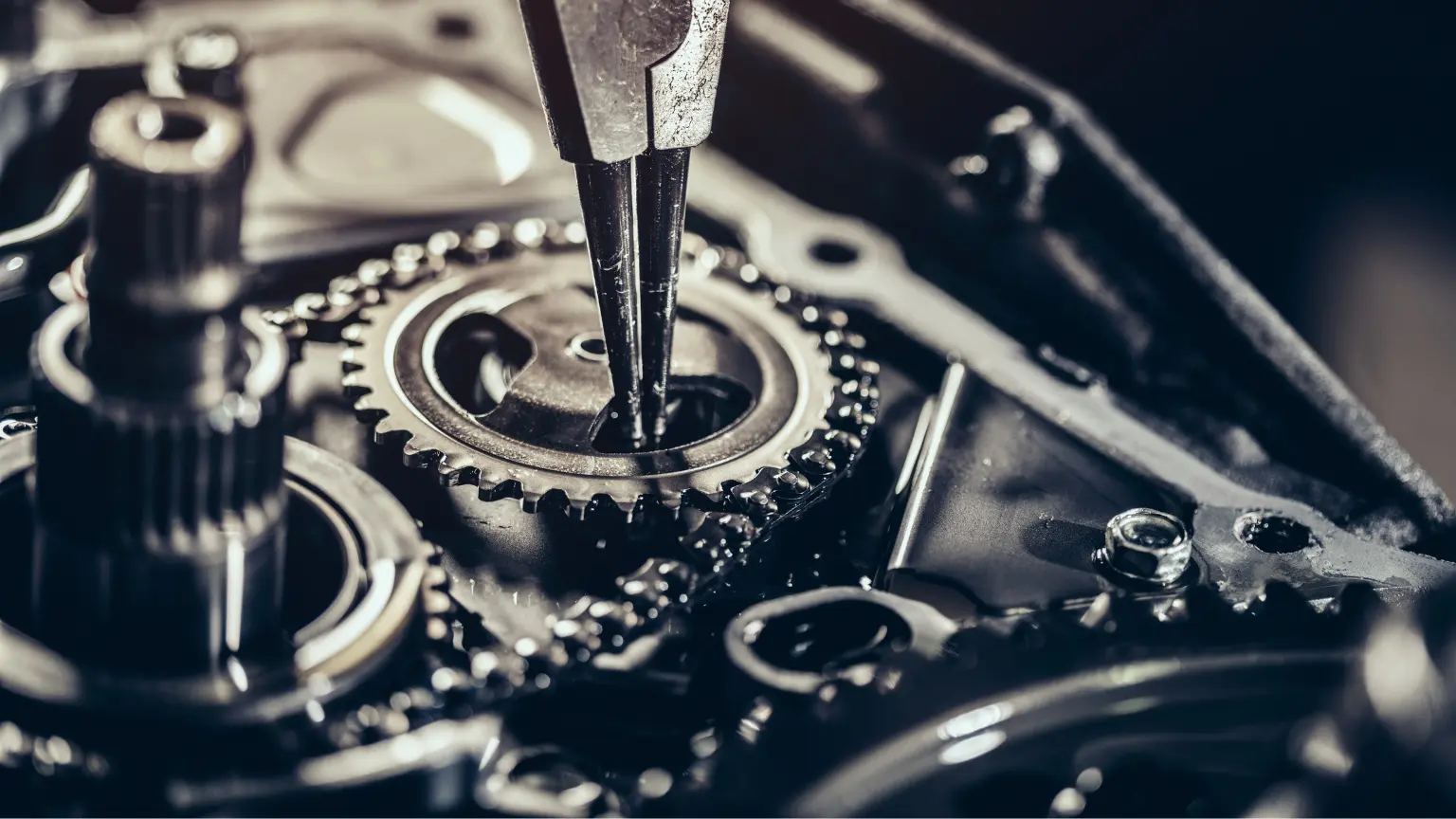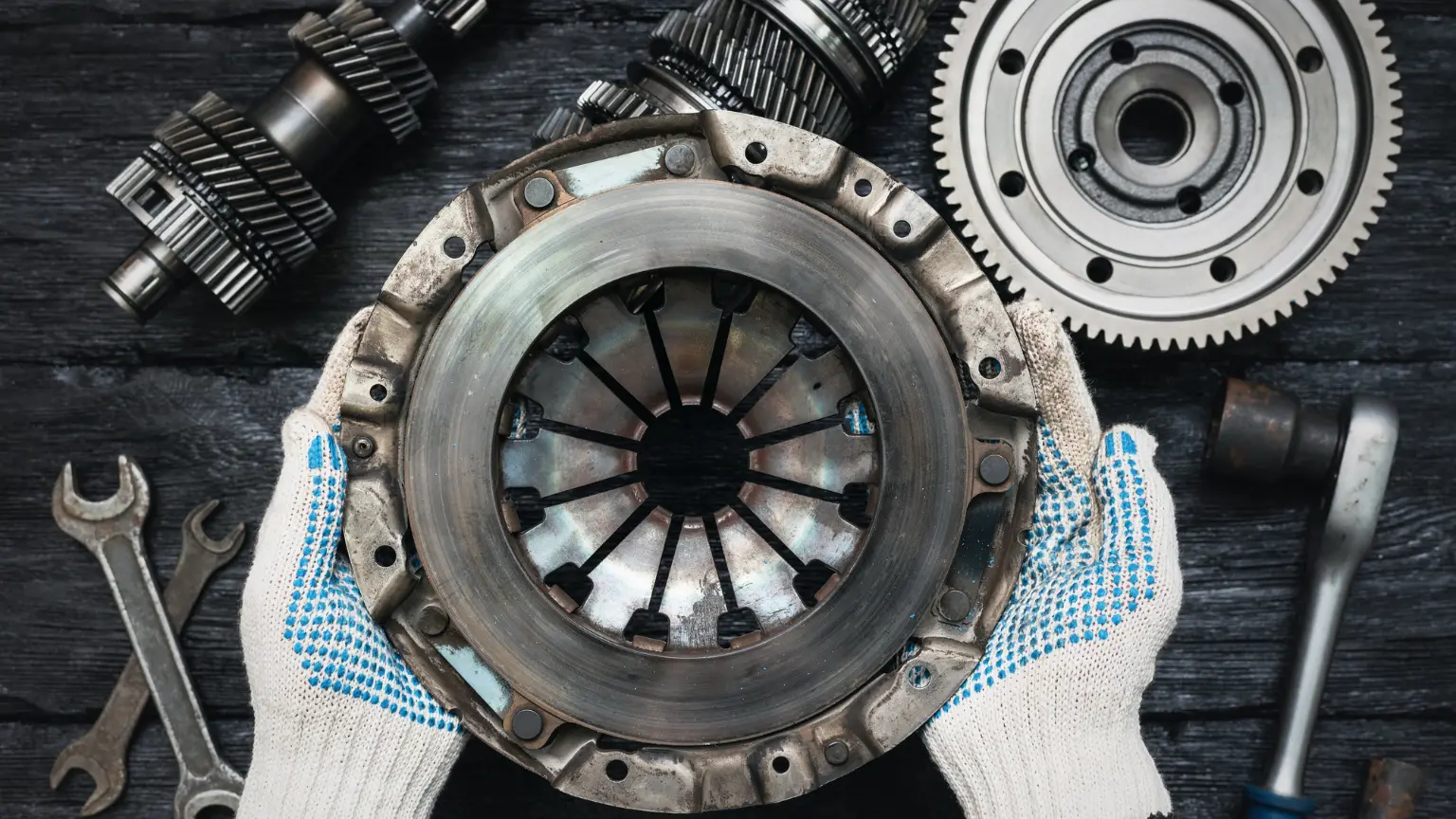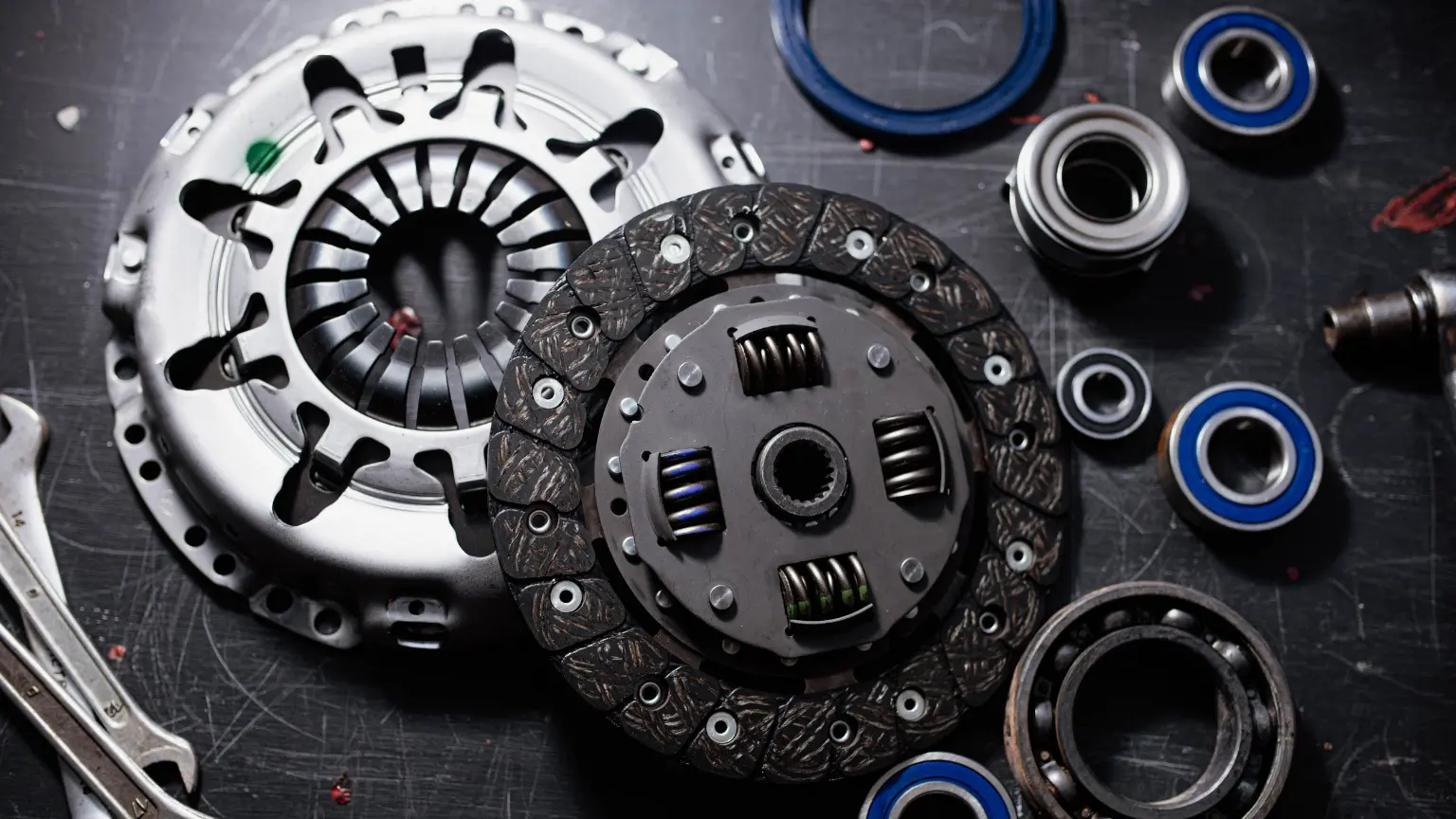Transmission Fluid: Maximizing Performance With Regular Maintenance
Transmission fluid lubricates, cools & powers your drivetrain for smooth shifting. Learn about fluid types—automatic, manual, synthetic & heavy-duty—how to check levels & perform changes & flushes.

Transmission fluid is essential for the smooth operation of your vehicle's system, acting as a lubricant for the moving parts and as a coolant to prevent overheating. Without proper transmission fluid maintenance, components may wear out faster, leading to decreased performance and potentially costly repairs. This fluid helps in transmitting power from the engine to the transmission, ensuring that your vehicle shifts gears smoothly and efficiently. Regularly checking and maintaining the right fluid levels is crucial to keeping your vehicle running optimally and extending the life of your transmission.
Understanding Transmission Fluid Types and Their Functions
Automatic vs. Manual Transmission Fluid
Transmission fluids are specialized to cater to the specific needs of automatic systems and manual ones, each playing a critical role in the smooth operation of a vehicle. Automatic transmission fluids are designed to handle a multitude of functions, including hydraulic pressure, cooling, and lubrication. Conversely, manual transmission fluids are primarily lubricants that manage less complex systems but still require properties that ensure longevity and protect against wear.
Choosing the Best Transmission Fluid for Your Vehicle
It involves considering several factors, including manufacturer specifications, driving conditions, and whether your vehicle uses an automatic or manual system. For most drivers, adhering to the vehicle manufacturer's recommended fluid type ensures compatibility and optimal performance. It's essential to use a fluid that matches the specific requirements of your transmission, as incorrect fluids can lead to inefficient performance and even damage.

Synthetic vs. Conventional Transmission Fluids
Synthetic transmission fluids are engineered to perform better under severe driving conditions such as extreme temperatures, high mileage, and heavy towing. They offer enhanced lubrication, better high and low-temperature performance, and increased fluid life. On the other hand, conventional transmission fluid types are suited for normal driving conditions and are often preferred for older vehicles.
Specialized Fluids for Heavy-Duty Vehicles
These specialized fluids are formulated to handle higher torque and higher temperature operations typical of sports cars and commercial vehicles. Using the correct high-performance fluid extends the life of an automatic transmission and enhances overall vehicle agility and responsiveness. For vehicle owners who push their vehicles to the limit, investing in these higher-grade fluids can be a crucial aspect of effective transmission fluid upkeep.
How to Check Transmission Fluid
Using a Dipstick to Check Fluid Levels
To ensure your transmission fluid maintenance is up to date, regularly checking the fluid level and condition via a dipstick is essential. For most vehicles, this involves parking on level ground, operating the vehicle until it is warm, and then locating the dipstick under the hood. Pull it out, clean it off, reinsert it fully, and then withdraw it again to check the level. The fluid should be at the full mark and appear clean and bright red. Dark or dirty fluid might indicate the need for a transmission fluid change.
Electronic Monitoring Systems
Many modern vehicles are equipped with electronic monitoring systems that provide real-time diagnostics of transmission fluid health. These systems can alert you to low fluid levels, unusual temperature fluctuations, and other potential issues that require attention. Understanding what these alerts mean can save you from costly repairs by addressing fluid maintenance tips early on.
Signs of Low Fluid
Low fluid levels can lead to several noticeable issues that impact driving quality and vehicle safety. Here is a look at the three common signs of low transmission fluid:
- Slipping Gears: The precise engagement and disengagement of gears are fundamental to a vehicle’s smooth operation. Within the transmission, hydraulic pressure generated by the fluid is what facilitates these shifts. When fluid levels are insufficient, this pressure diminishes, leading to a cascade of problems. The vehicle might struggle to maintain the selected gear, resulting in unexpected slippage, where the transmission disengages momentarily or entirely. This can produce a sensation of the car lurching or hesitating, particularly during acceleration or when climbing inclines. Moreover, gear shifts can become erratic and jerky, detracting from the overall driving experience and potentially posing a safety hazard. The transmission’s inability to reliably engage gears can also lead to increased wear and tear on internal components, as the system struggles to compensate for the lack of adequate fluid pressure. The driver may notice an increase in engine RPM without a corresponding increase in vehicle speed, a clear indication of the transmission slipping.
- Overheating: Low fluid levels severely compromise this cooling mechanism. As a result, the transmission is more susceptible to overheating, which can lead to a host of detrimental effects. Excessive heat can degrade the transmission fluid itself, causing it to break down and lose its lubricating and cooling properties. This degradation further exacerbates the problem, creating a vicious cycle of increasing heat and diminished fluid effectiveness. Overheating can cause internal components such as seals, gaskets, and clutches to warp or fail, leading to costly repairs. A vehicle experiencing transmission overheating may exhibit symptoms such as a burning smell emanating from under the hood or warning lights on the dashboard. In severe cases, the transmission may cease to function altogether, leaving the vehicle stranded.
- Delayed Engagement: The responsiveness of a vehicle's transmission is crucial for a seamless driving experience. When shifting from park to drive or from neutral to drive, the engagement should be immediate and smooth. Low transmission fluid levels can disrupt this process, resulting in a noticeable delay. This delay occurs because the transmission lacks the necessary hydraulic pressure to engage the gears promptly. The driver may experience a lag between shifting gears and the vehicle's actual movement, which can be particularly concerning in situations requiring quick acceleration or maneuvering. This delay not only affects the driving experience but also poses potential safety risks, especially in heavy traffic or when making quick maneuvers. The transmission’s inability to engage gears efficiently can also contribute to increased wear and tear on the clutch packs and bands, as the system struggles to compensate for the lack of fluid pressure.
These symptoms, if noticed, should prompt an immediate inspection and potentially a transmission fluid flush service to restore proper fluid levels and functionality, safeguarding your vehicle’s transmission for longer and more reliable service.

When and How Often to Inspect
The frequency of transmission fluid maintenance can vary based on the vehicle type, the transmission age, and your driving habits. Most manufacturers recommend checking it every 30,000 to 60,000 miles. However, more frequent checks are advisable for vehicles used in harsh environments or for heavy towing. Always consult your owner’s manual for specific guidance related to regular car maintenance.
Transmission Fluid Change and Flush Procedures
Step-by-Step Guide to Change Transmission Fluid
Changing it can significantly extend transmission life. This process varies slightly between vehicles, but the following steps provide a general guide that applies to most:
- Prepare Your Vehicle: The initial step in changing transmission fluid is to warm up your vehicle. This is not merely a formality; it serves a crucial purpose. When the engine is warm, the transmission fluid becomes less viscous, allowing it to flow more freely. This enhanced fluidity ensures that a greater volume of the old, contaminated fluid is drained from the system, effectively removing accumulated debris and impurities. Warming the vehicle allows the fluid to mix with the contaminants, making them easier to drain. This step ensures that the new fluid will operate in a cleaner environment, maximizing its effectiveness. The vehicle should be run for a few minutes, not excessively, to prevent the fluid from becoming too hot, which could pose a safety risk during the draining process.
- Lift the Vehicle: Using a professional lift provides the most stable and safe working environment. However, if a lift is unavailable, high-quality jack stands can be used. It is crucial to ensure that the jack stands are rated for the vehicle's weight and are placed on solid, level ground. The vehicle must be raised high enough to allow comfortable access to the transmission drain plug and filter. Double-check the stability of the vehicle before proceeding with any further steps. A secure lifting setup minimizes the risk of accidents and ensures that you can work safely under the vehicle.
- Locate and Remove the Drain Plug: The transmission drain plug is typically located on the bottom of the transmission pan. Placing a large drain pan beneath the plug is essential to catch the old fluid, preventing spills and environmental contamination. Carefully loosening the drain plug with a wrench is necessary, as over-tightening can damage the plug or the pan. Once loosened, the plug can be removed, allowing the old fluid to drain completely. It is advisable to allow ample time for the fluid to drain thoroughly, ensuring that as much of the old fluid as possible is removed. Inspect the drain plug for any damage or wear, and replace it if necessary. This step is critical for eliminating the old, dirty fluid.
- Replace the Filter: In most vehicles, changing the transmission filter is a necessary part of the fluid replacement process. The filter is designed to remove contaminants from the fluid, ensuring that the transmission operates cleanly. Once the old fluid is drained, the transmission pan must be removed to access the filter. Carefully remove the bolts securing the pan, and gently detach it, being mindful of any residual fluid. The old filter can then be removed and replaced with a new one. Ensure that the new filter is correctly positioned and securely fastened. Clean the transmission pan and gasket before reinstalling it, and replace the gasket if it is damaged or worn.
- Reinstall Drain Plug and Refill Fluid: After replacing the filter and reinstalling the transmission pan, the drain plug must be reinstalled and tightened to the manufacturer's specifications. Using a funnel, add the new transmission fluid through the dipstick tube. It is essential to use the correct type and quantity of fluid, as specified in the vehicle's owner's manual. Overfilling or using the wrong type of fluid can damage the transmission.
- Check for Leaks and Test Drive: After refilling the transmission fluid, start the vehicle and let it run for a few minutes to allow the fluid to circulate. Carefully inspect the transmission pan and drain plug for any leaks. If any leaks are detected, tighten the connections as needed. Take the vehicle for a short test drive, paying close attention to the transmission's shifting behavior. Ensure that the gears engage smoothly and without any hesitation or slippage. This final step ensures that the transmission is functioning correctly and that there are no leaks. The test drive will confirm that the transmission is working properly.
Regular changes will maintain the mechanical integrity of your transmission, ensuring that it continues to operate efficiently and without premature wear.
How Fluid Flushes Remove Contaminants and Debris
During a flush, a special machine forces a large volume of clean fluid through the transmission system, dislodging and removing particles and sludge. This process ensures that the transmission is thoroughly cleaned, promoting smoother operation and preventing potential mechanical issues. Considering the complexity and required equipment, it might be better handled by professionals, although the cost can vary widely depending on the service provider and the type of fluid used. Typically, professional flushing costs more than a simple change due to the thoroughness of the service and the volume of fluid required. However, performing this service at home can reduce costs significantly for those with mechanical expertise and the necessary tools. Whether you choose a professional service or a DIY approach, ensuring that your transmission fluid is adequately maintained is key to your vehicle’s longevity and reliability.
Integrating Transmission Care into Regular Car Maintenance
Coordinating with Other Services
To streamline vehicle maintenance, coordinate fluid changes with other routine services such as oil changes or tire rotations. This saves time while also helping to keep your vehicle in top condition. By managing these services together, you can reduce the likelihood of overlapping service appointments and ensure that all aspects of your vehicle’s maintenance are addressed comprehensively.
Long-Term Benefits of Proactive Fluid Upkeep
It prevents the buildup of contaminants and wear particles, which can lead to costly repairs. Additionally, a well-maintained vehicle retains a higher resale value, providing better returns on your investment. Automatic transmission care and preventive maintenance are key strategies in achieving these long-term benefits.

Consistent and thorough maintenance of your vehicle’s transmission fluid enhances its performance and prevents costly repairs. By ensuring that your drivetrain fluid replacement is clean and at the correct level, you help maintain the mechanical integrity of your transmission, which is crucial for smooth and efficient operation. Regular checks and changes can catch potential problems before they escalate into more significant issues, saving you money and time in the long run.
Follow a maintenance program
Ante gravida id aenean quis egestas risus nam amet nullam leo diam diam aliquam eu eu malesuada arcu rhoncus suspendisse nulla mattis ut amet sagittis in justo egestas.

search for a trusted mechanic
Lorem ipsum dolor sit amet, consectetur adipiscing elit lobortis arcu enim urna adipiscing praesent velit viverra sit semper lorem eu cursus vel hendrerit elementum morbi curabitur etiam nibh justo, lorem aliquet donec sed sit mi dignissim at ante massa mattis.
- Neque sodales ut etiam sit amet nisl purus non tellus orci ac auctor
- Adipiscing elit ut aliquam purus sit amet viverra suspendisse potent
- Mauris commodo quis imperdiet massa tincidunt nunc pulvinar
- Excepteur sint occaecat cupidatat non proident sunt in culpa qui officia
Check the air pressure in your tires
Vitae congue eu consequat ac felis placerat vestibulum lectus mauris ultrices cursus sit amet dictum sit amet justo donec enim diam porttitor lacus luctus accumsan tortor posuere praesent tristique magna sit amet purus gravida quis blandit turpis.
Review your suspension frequently
At risus viverra adipiscing at in tellus integer feugiat nisl pretium fusce id velit ut tortor sagittis orci a scelerisque purus semper eget at lectus urna duis convallis. porta nibh venenatis cras sed felis eget neque laoreet suspendisse interdum consectetur libero id faucibus nisl donec pretium vulputate sapien nec sagittis aliquam nunc lobortis mattis aliquam faucibus purus in.
- Neque sodales ut etiam sit amet nisl purus non tellus orci ac auctor
- Adipiscing elit ut aliquam purus sit amet viverra suspendisse potent
- Mauris commodo quis imperdiet massa tincidunt nunc pulvinar
- Excepteur sint occaecat cupidatat non proident sunt in culpa qui officia
Service your vehicle as regularly as posible
At risus viverra adipiscing at in tellus integer feugiat nisl pretium fusce id velit ut tortor sagittis orci a scelerisque purus semper eget at lectus urna duis convallis. porta nibh venenatis cras sed felis eget neque laoreet suspendisse interdum consectetur libero id faucibus nisl donec pretium vulputate sapien nec sagittis aliquam nunc lobortis mattis aliquam faucibus purus in.
“Nisi quis eleifend quam adipiscing vitae aliquet bibendum enim facilisis gravida neque velit euismod in pellentesque”
Conclusion
Eget lorem dolor sed viverra ipsum nunc aliquet bibendum felis donec et odio pellentesque diam volutpat commodo sed egestas aliquam sem fringilla ut morbi tincidunt augue interdum velit euismod eu tincidunt tortor aliquam nulla facilisi aenean sed adipiscing diam donec adipiscing ut lectus arcu bibendum at varius vel pharetra nibh venenatis cras sed felis eget.


